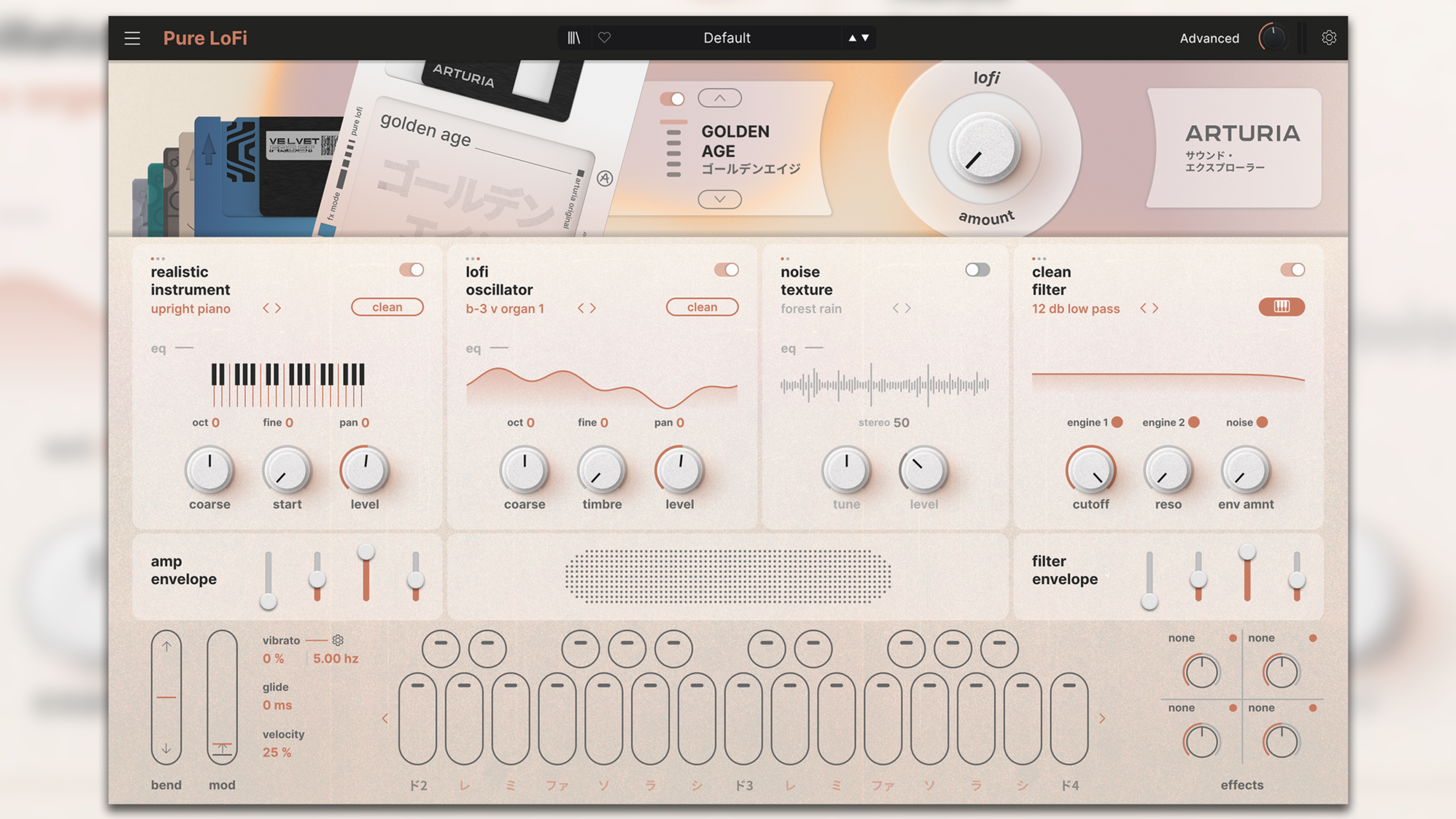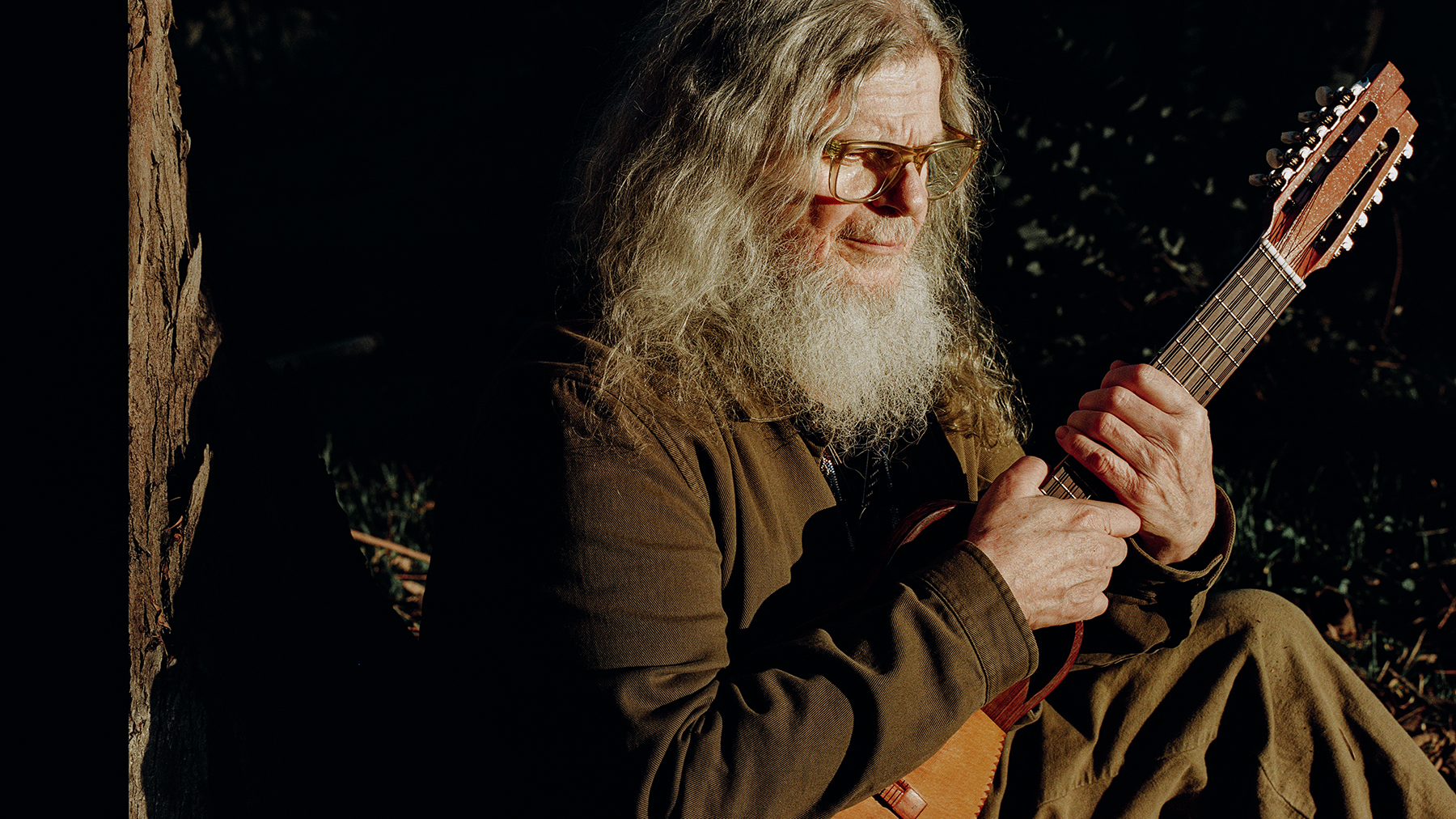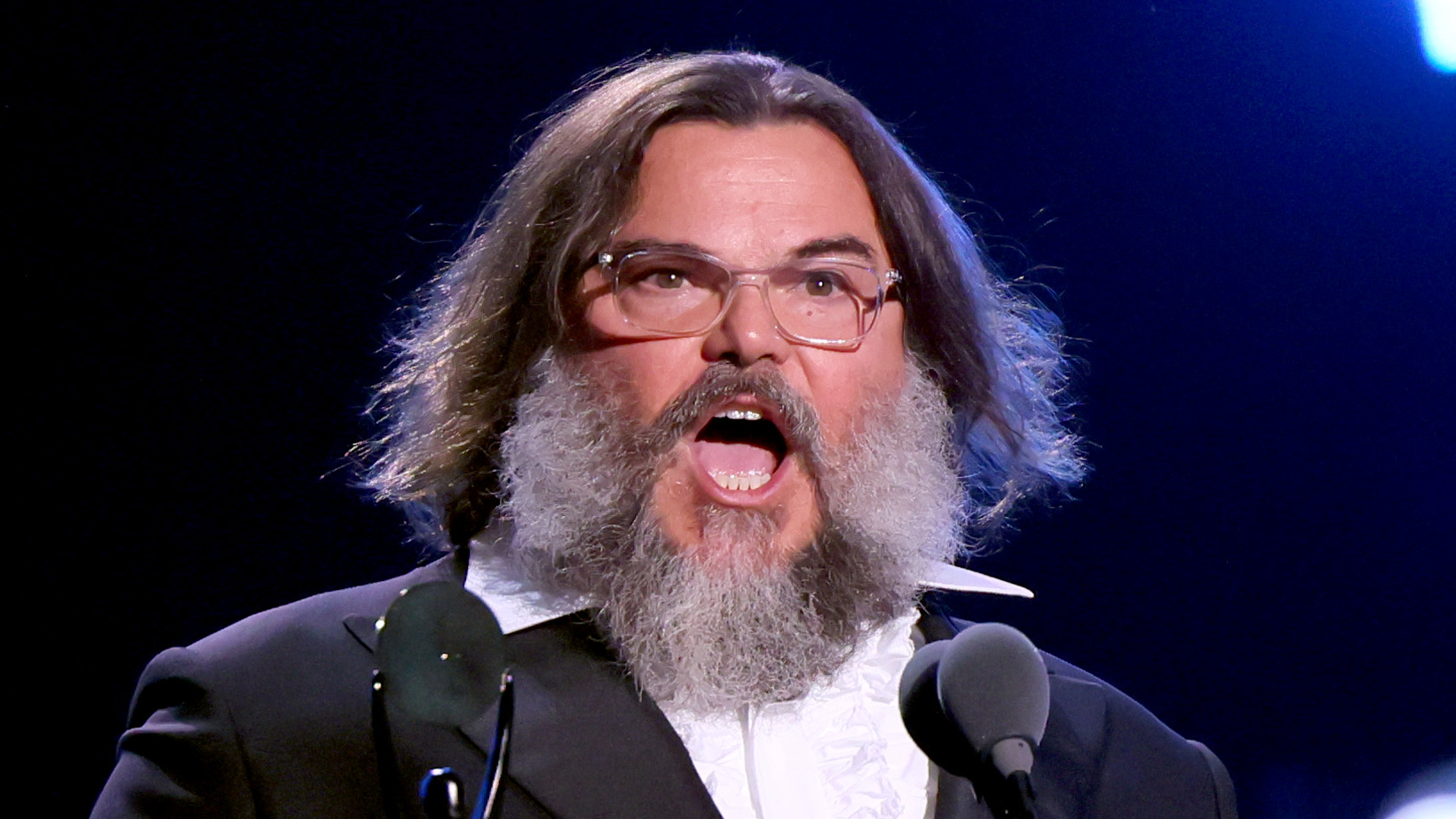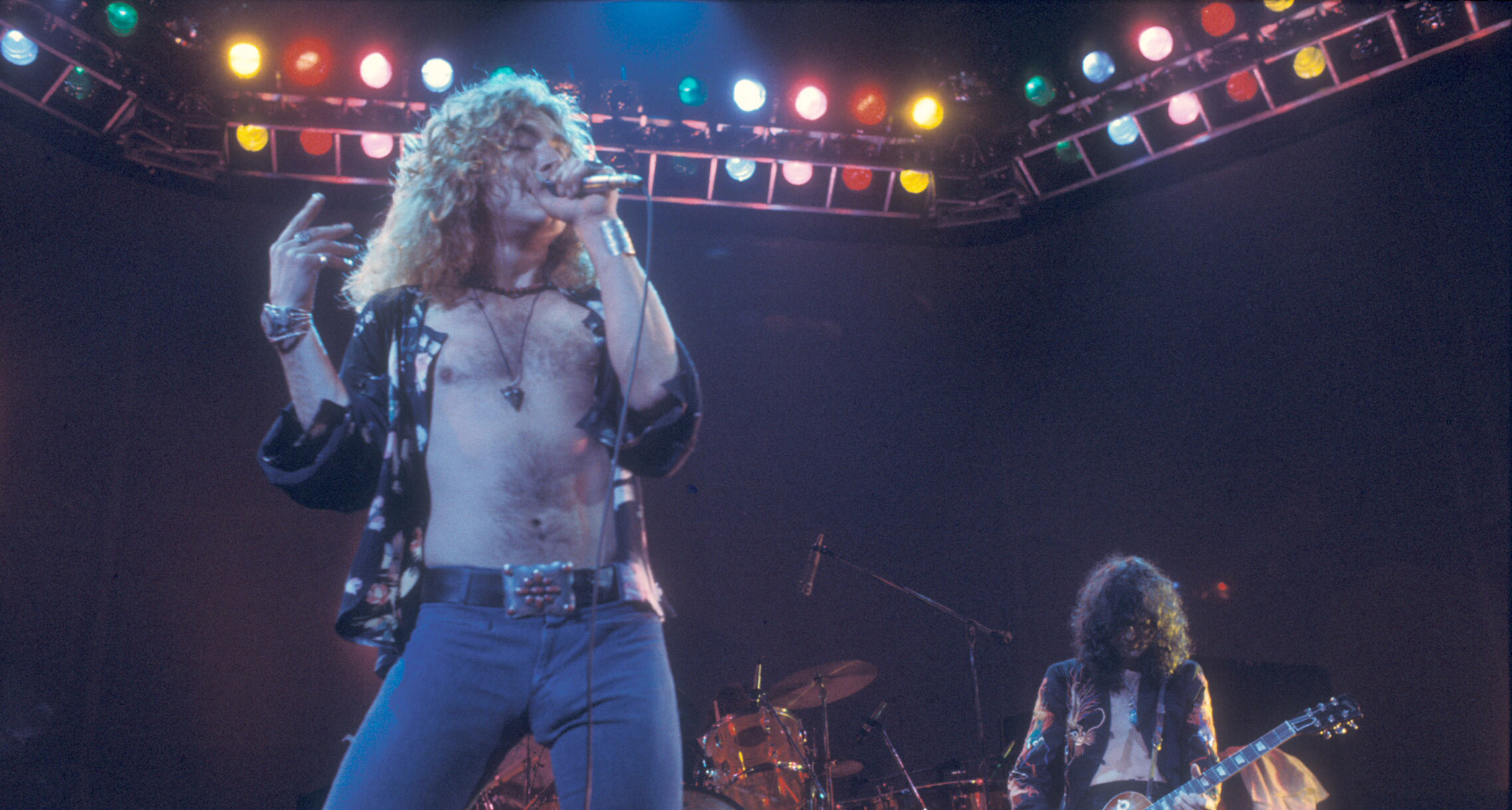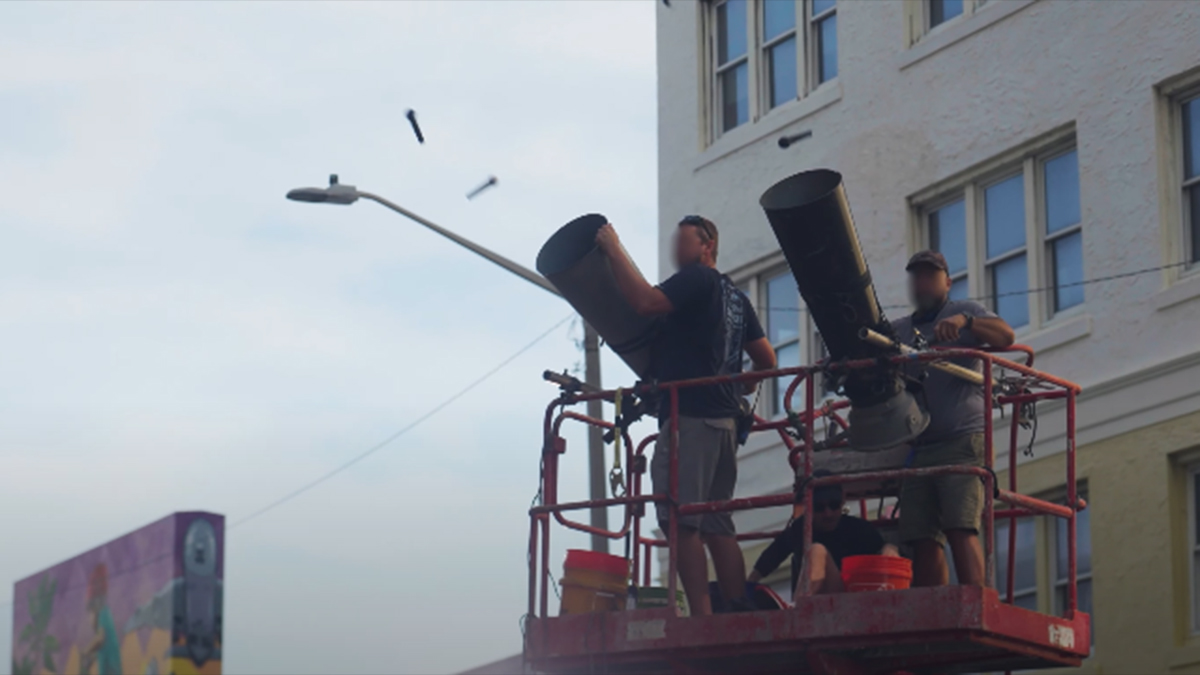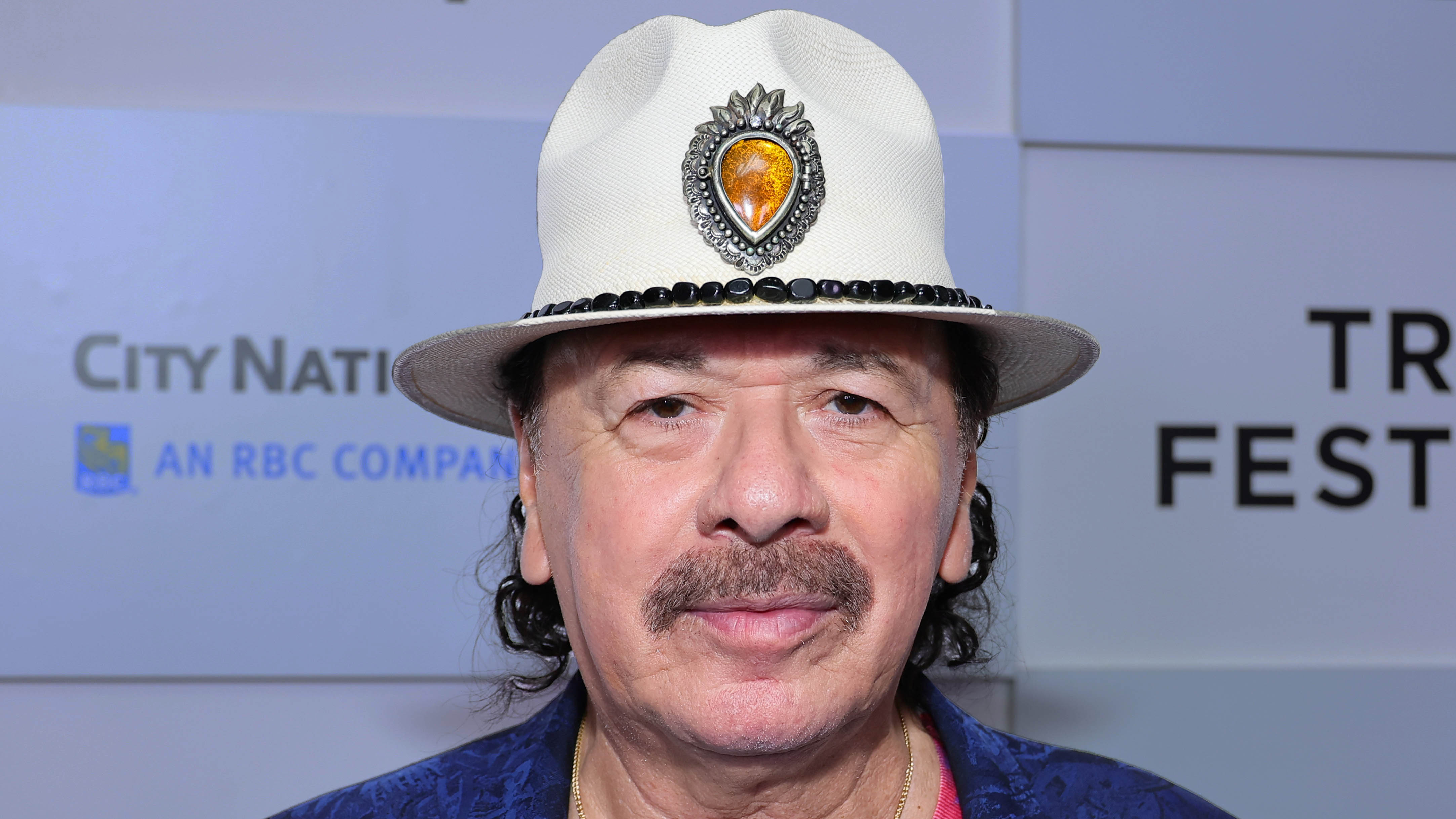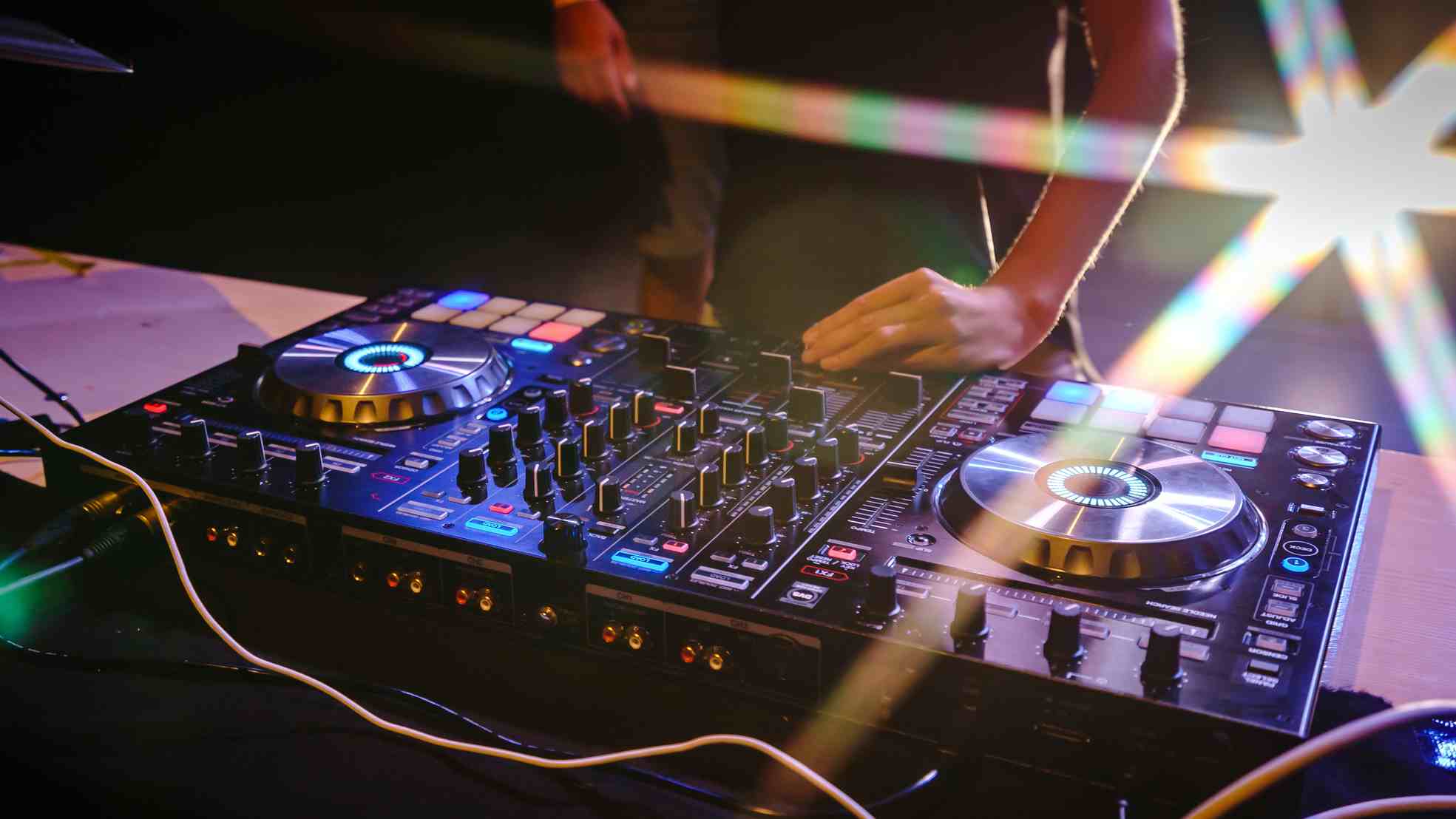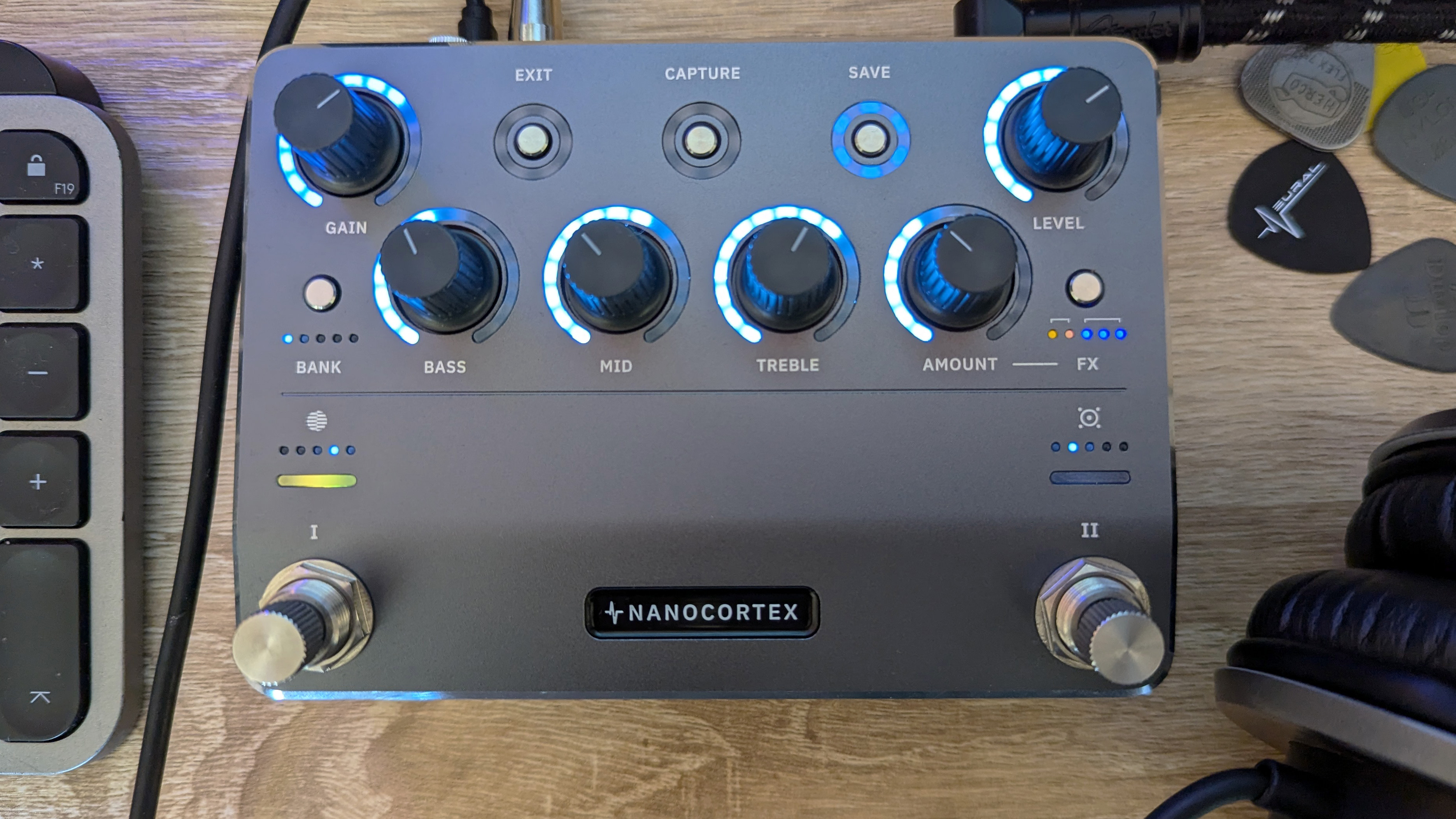"As a little girl I’d had dreams like that and there I was on stage at the Royal Albert Hall. I’ve played there many times, but not with Eric Clapton next to me!": Susan Tedeschi on honouring Jeff Beck and why the Telecaster chose her
Susan's signature Fender takes Telecaster versatility to a new level – and it mirrors her incredible career so far

Few bands are able to articulate the complexity, depth and range of human emotions quite in the same way as the Tedeschi Trucks Band. They’re the kind of group who seem to have infinite layers of dynamics to explore, with all kinds of subtle builds to bridge into the soaring rootsy hooks and spellbinding bluesy magick they typify.
Fronted by singer/guitarist Susan Tedeschi, with husband and slide guitar maverick Derek Trucks adding his inimitable sense of flair, the band formed after the pair met while she was opening for The Allman Brothers, the legendary southern rock band her future husband had been playing in. After briefly performing together as Soul Stew Revival, which saw their respective bands merged into together, the Tedeschi Trucks Band was born in 2010 and the pair have never looked back.
This year Tedeschi is being awarded her own signature Telecaster through Fender, based on the early 90s green American Standard model that was immortalised on the cover of her 1998 Just Won’t Burn album and, for reasons she goes on to explain, has never been far from her side ever since. To have her name on an artist model is a huge honour, she tells MusicRadar, though as we learn from this conversation with the husky-voiced blues star, her career has been full of unexpected yet welcome surprises.
I was kinda blown away when I went to the factory how many women build the guitars
“Having a signature Fender guitar really is a dream come true,” she beams, video conferencing MusicRadar from the Florida home she shares with her husband and family. “You know, there’s really not a lot of women who have achieved that, so for me it’s like a triple honour.”
As she goes on to explain, the visibility of females in the music industry is improving, both on and off stage. There’s still a long way to go before the word equality can be stated with any absolute certainty, but from her perspective it’s empowering to see how girl power is thriving across the board. “I was kinda blown away when I went to the factory how many women build the guitars,” she grins. “I was like ‘Holy shit, it’s mostly girls in here!’ When I asked about that, they told me some of the men are too rough and would end up breaking the guitars! That was amazing to hear, it kinda reminded me that women have superpowers.”
The new signature model features custom single-coil pickups voiced specifically after her prized instrument, a C profile maple neck, a Master TBX tone control and a distinctive four-ply tortoiseshell pickguard. But perhaps it’s the Aged Caribbean Mist finish that will catch people’s attentions first and foremost, no matter how far they might be from the stage. As fate would have it, the original guitar – a 1993 model acquired by Tedeschi two years later in 1995 – carried a slightly different shade of aquamarine when it found its way into her life...
“My Tele was a little more blue originally, but over time it became more green,” she continues. “Fender asked me which colour we should use for the new signature: the one it was or the one that it is. And I told them, ‘Definitely the one that it is now!’ It’s such a gorgeous colour. We’re all really happy with it... I will never look at that finish and think it’s ugly!”
Get the MusicRadar Newsletter
Want all the hottest music and gear news, reviews, deals, features and more, direct to your inbox? Sign up here.
If you’ve managed to catch the official Fender promotional video for the signature, you will already know it’s a guitar that sounds every bit as beautiful as it looks, especially when placed in the hands of a player as skilled as Tedeschi. For the performance clips, she was plugged into a Fender amp with the tremolo engaged and nothing in between. As she goes on to explain, a guitar and an amp are all she needs to get the job done, and as we all know it’s a job she always does very well.
“It was probably a Deluxe Reverb or Vibrolux,” says Tedeschi. “I find Twins a little too bright for me. I’m not a huge fan of them because they tend to be really loud and piercing. That’s why I’m more into the sound of a Deluxe or Vibrolux. And, of course, a Super Reverb... that’s what I use on a regular basis when I’m on stage. Just an old-school Super and that’s me!”
One thing you mention in the video is how the neck pickup is notably warmer than other Telecasters. Why do you think that is?
Sure enough, when Fender took it in to try and replicate it, they found it hard to get it exactly right at first
“That’s the thing about any pickup or guitar... they’re all different. This pickup was hand-wound years ago, it was actually a used guitar when I got it. I found it hanging up on the wall at Cambridge Music in Somerville, Massachusetts. This was back in 1995, so it was already a couple of years old. It felt kinda customy, as if the previous owner had done their own thing to it.
“I just loved the sound of the guitar. Sure enough, when Fender took it in to try and replicate it, they found it hard to get it exactly right at first. But they did a great job of finding a sound that was warmer and hotter like mine. It’s such a hard thing to capture. Most of us players don’t realise how every guitar will end up sounding different. Fender kept sending me pickups and I would try them out until I found the one that was closest, with more volume and more depth. It’s a nice contrast to the thinner sounds you usually get from a Telecaster.”
It definitely seems to have more low end and less twang...
“For sure. People sometimes say to me ‘Oh yeah, you play a Tele!’ but in my head I’m thinking my guitar doesn’t really sound like one. It still has the pickup selector so you can mix up the sounds or even go in-between to get them out of phase for more of a Buddy Guy kinda tone.
“I love learning about this stuff. I’m not really a huge tech person, I’m more of a ‘plug in and go’ style of player. But along the way I’ve been learning about different pedals and other gear. Over the years I’ve mainly just stuck with my wah-wah pedal and a tuner, though I love the sound of vibrato and tremolo, too... those tones are always fun. I quite like Supro amps for that. They always make a really nice tremolo, as do Ampeg with their Reverberockets, which have a lovely vibrato and tremolo.”
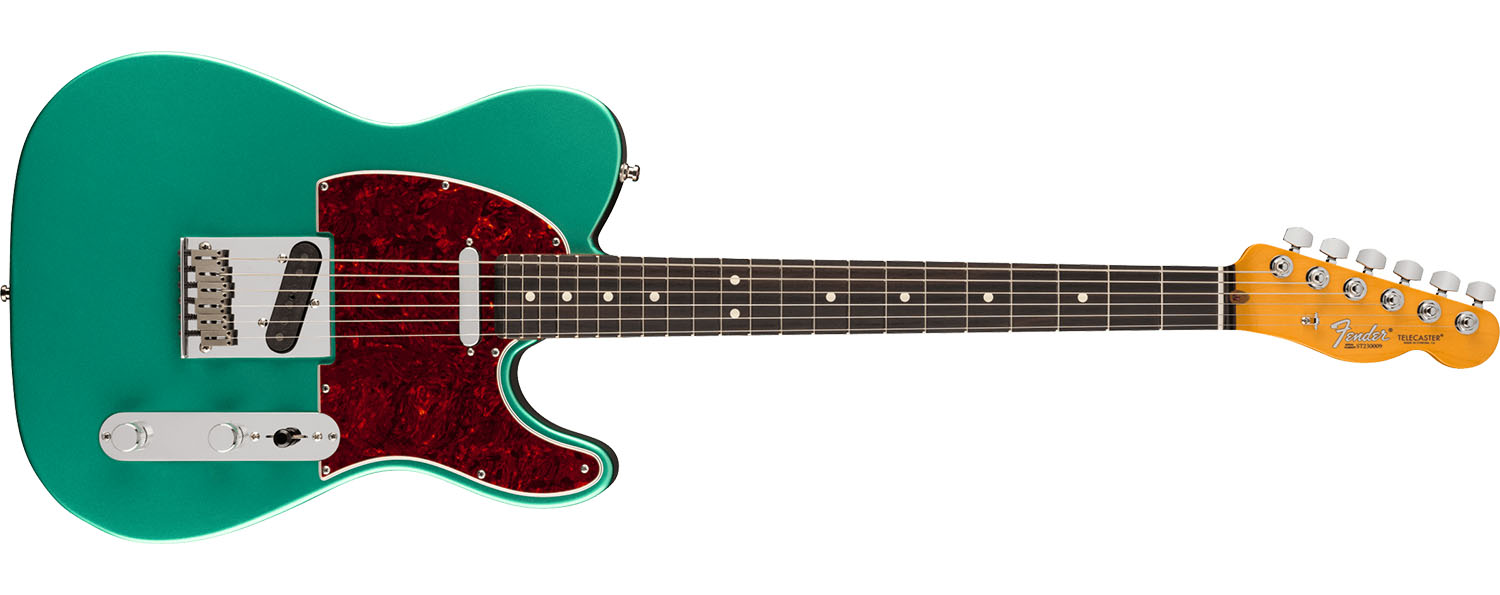
It’s interesting that your model features a TBX tone circuit like some of the old Jeff Beck and Eric Clapton Strats, where one to five are the classic Tone knob parameters and six to 10 take things up a gear...
“I wasn’t sure about it at first, always staying in the first half of the dial, but then found myself using that stuff more and more. Once you get over the threshold of the halfway point, it definitely starts breaking up a bit more and sounding thicker. If I want a really warm tone, I’ll roll it back from five and crank up the volume. It’s all there, you can find it, but the settings are slightly different to a regular Tele. Ultimately there are more options.”
So which players drew you into playing Telecasters?
“Early on, I remember Albert Collins playing one. Of course, he always sounded amazing. But, you know, it wasn’t so much the players as it was the guitar itself. I feel like the Telecaster picked me! I had a dream about this guitar and went back to the store to buy it the next day. I liked it because it sounded a bit like a Strat and Tele, but with a different take on it, falling almost in between. I knew straight away this guitar would be very universal. You can use it for any style of music.
A lot of people don’t think about this, but when you are recording or mixing a band and you bring up two things that sound similar, they can occupy the same space in your hearing and in your brain
“My husband Derek usually plays a Gibson SG, so he has that humbucker sound. Having a single-coil guitar is really helpful for me because it helps create a different sound. Using two guitars with humbuckers could end up sounding quite same-y and too similar. We don’t want to have the exact same tone when we are playing together. Having different guitars helps people out who they are hearing – obviously Derek and I have our own feel as musicians, but using different guitars and tones makes it even more obvious. It creates more space.
“A lot of people don’t think about this, but when you are recording or mixing a band and you bring up two things that sound similar, they can occupy the same space in your hearing and in your brain. A little bit of separation can help instruments compliment each other more.”
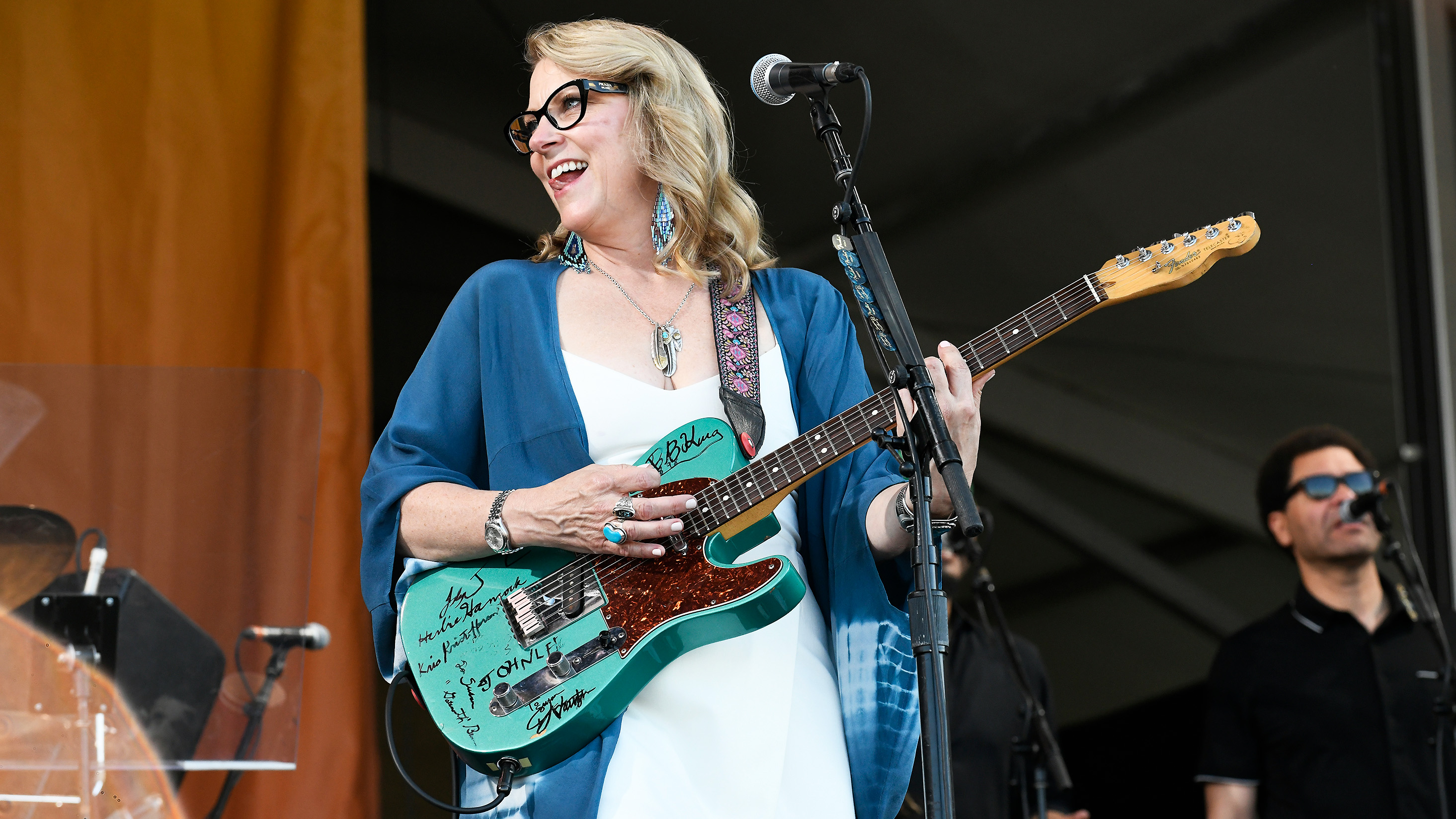
Your guitar is adorned with all kinds of signatures from famous musicians such as the late, great B.B. King. Can you talk us through your favourites?
“The first signature was done in 1997 by Clarence ‘Gatemouth’ Brown. I was so excited because I was going to Martha’s Vineyard with my band to open for him. We got there and President Clinton decided to have a party at the venue for his secretary. Somehow, Carly Simon, who owned the place, kicked me out of my spot and kept Gatemouth, who was quite upset by that.
He was smoking pot out of a pipe with all these government agents running around
“He told them ‘Susan’s with me!’ to stop Secret Service coming in and making us leave. Then he looked at me and said ‘You are like my granddaughter, so you are going to stay with me today so we can all hang out!’ He was smoking pot out of a pipe with all these government agents running around, and this is before marijuana was even legal. He was the OG, telling everyone he was the Deputy Sheriff in Slidell, Louisiana. He was so great to me and that’s how he ended up being my first signature.
“And then in 1998 I went on tour with BB King and Buddy Guy, who were the next ones to sign it. Buddy signed ‘Buddy Guy 98’ on the back of my headstock, which is where my name is on the signature guitars. Most of the people who have signed my guitar are musicians I’ve opened for or played with, rather than random people. Jimmie Vaughan is also on there because I’ve toured a bunch with him. I used to have Double Trouble on there, too... but it came off. They were my band when I was opening up for The Allman Brothers, which is when I met my husband.
“Other people on there are Willie Nelson. Doctor John came off, sadly, his signature wore off over time, as did Bonnie Raitt’s and John Hiatt’s signatures. Other idols that are still on there are Kris Kristofferson, Joe Walsh, Ron Wood, Ernie Isley, Herbie Hancock, Little Melvin, John Lee Hooker... it’s a really special guitar but it’s quite sad I’ve never lacquered it to protect the signatures. It’s the only thing that’s a bummer, I’m afraid they will all come off one day. I need to protect what’s left!”
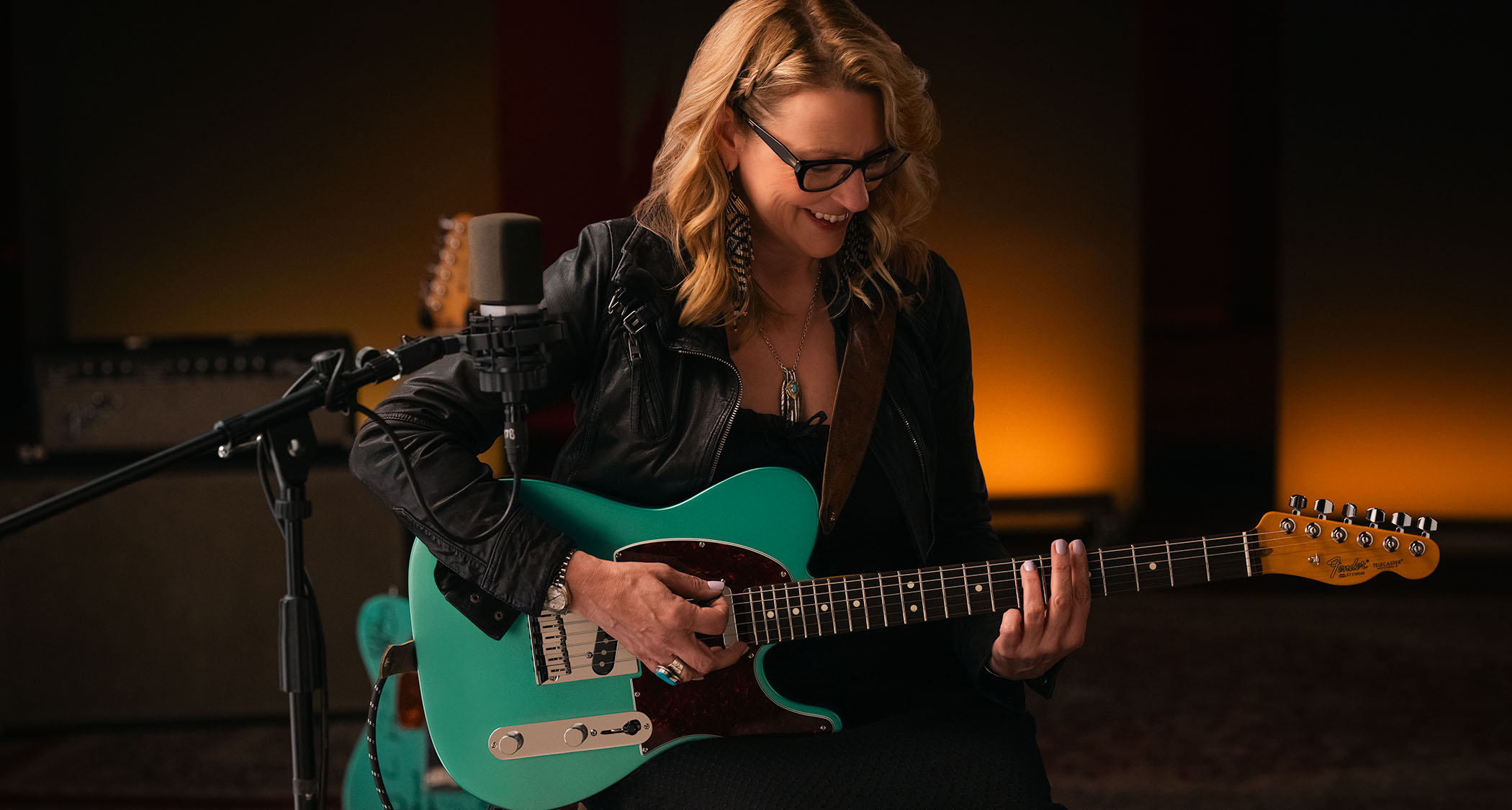
Sometimes I feel like it’s Derek who owns all the guitars but that’s not true
So how many guitars do you own in total and which ones would you say are the most collectable or meaningful?
“I actually don’t know! Right now we’re renovating our house and all our stuff is moving around – some of it’s on the road, on the truck, in the studio and elsewhere. Sometimes I feel like it’s Derek who owns all the guitars but that’s not true. I own a bunch of guitars, like a 1977 Telecaster in Natural with all the original parts. That’s a beautiful guitar that sounds really good.
“I also have a Cream Custom Shop Telecaster with a maple neck but a rosewood board. All of my guitars have a rosewood fretboard because I prefer warmth over brightness. I also have a 1970 Strat that my husband bought me years ago for my birthday, and it’s my birth year Strat. He also got me another one of my favourite guitars, which I really need to bring out on the road but I’m too scared because there’s only 88 of them in the world, and that’s a 1960 Blonde dot neck Gibson 335.
“It’s gorgeous, it’s pristine and it’s amazing... though it does need a new set of strings right now. When the studio gets renovated I will be using that on our records.”
What can you tell us about your very first guitar?
“It was one that my Dad gave me, which originally belonged to him, a 1971 Martin 00-18. I wrote many songs on it as a teenager and other tracks like Looking For Answers and stuff like that. It’s very special to me, especially because you can get that Elmore James sound by putting in a Lawrence pickup, plugging into a Deluxe Reverb and cranking the reverb up all the way. It’s that sound!
“One year, Derek was doing an Elmore tribute record and asked me how to get that tone, so I gave him that guitar and he was blown away by how close it got him. Especially given how he plays, because his intonation is so perfect on slide. That was a fun little thing! I guess tone really is just trial and error, you learn by doing stuff and trying different things out.”
You mentioned that you tend not to use too many pedals. But beyond the wah and tuner, are there any that have impressed you over the years?
“There’s a company called Moollon who makes a few pedals that I really like. Every once in a while I will switch them in, but one I use a lot is the Z.O.D. Zeppelin Overdrive which can do boost all the way to distortion. You can control the gain, volume, treble and bass to dial in the tone you’re looking for, whether it’s more clean or broken up. I use their pedals quite a lot.
“I also really like Piedmont Custom Electronics, who are based in Atlanta and make Derek’s Aluminum Falcon pedal. They made me something specifically for me Tele which sounds really cool. One other pedal I use a lot is called the FuzzBubble-45, made by Analog Alien. Those are really cute and fun. I try not to get too into the pedal thing. My husband had this pedal he borrowed from someone that cost something like $2,500. I didn’t even want to try it, just in case I liked it and wanted one. That’s an insane amount of money... more than what you’d pay for an amp!”
The last time you were in the UK, you performed two songs with your husband and Eric Clapton as part of the Jeff Beck tribute shows at the Royal Albert Hall. That must have been emotional!
“Jeff Beck was probably one of the most unsung legends of guitar. You’d always hear about Eric Clapton and BB King, while Jeff kinda flew a little bit more under the radar. But he was also a huge superstar that everyone was aware of. I first opened for him back in 1998 or 1999 in New York City.
Jeff Beck had a lot of female artists working with him, which was special and unique in such a male-dominated industry
“He was so sweet and actually invited me up to meet him and talk to him. In that moment, I remember thinking ‘Wait a minute, this really is Nigel from Spinal Tap!’ He was talking about his frets and amp settings... it kinda blew my mind because when I went to music college, we’d be watching Spinal Tap the whole time. He was one of those guitarists who could play anything, from The Beatles to Jimi Hendrix to even classical stuff. The sky was the limit with him. He was so gifted and could do it all, and would always create his own sound. He was so versatile and so great at playing melodies from the heart.
“He was also very supportive of women. He’d have a lot of female artists working with him, which was special and unique in such a male-dominated industry. His drummers and bass players had often been women, and even some of the other guitarists playing with him. All the badass guitar players love him because they know how hard it is to do what he did. Eric Clapton loved him, so did my husband.”
What do you remember about those two performances?
“It was so surreal, honestly. Walking out there, it was me, my husband, Eric and Doyle Bramhall II – so that’s four of us on guitar, all taking solos. One of the songs was The Sky Is Crying because Derek felt it was a good one that we could all play lead on. The other song was I Must Have Done Somebody Wrong.
“I grew up as a huge Eric Clapton fan, to the point where I had recurring dreams about him as a teenager. And then those dreams literally came true later on in life! I found myself saying ‘What the hell is happening?!’ Being on stage with him, in that moment, celebrating Jeff was such an honour and felt like a dream. As a little girl I’d had dreams like that and there I was on stage at the Royal Albert Hall. I’ve played there many times, but not with Eric Clapton next to me! So that was huge.
“There was a lot of love from all the people celebrating that night. We all loved Jeff. It was very dreamlike, with so many ‘pinch me’ moments. At one point I found myself hanging out in the wings, waiting with Johnny Depp being like ‘What’s up, dude?’ or chatting to Kirk Hammett from Metallica. It was amazing how many people from different worlds came together to celebrate a beautiful guitar player, musician and person.”
What was your highlight from the other performances?
“There were so many. Seeing Derek play Goodbye Pork Pie Hat was pretty wild, because that’s such a classic Jeff song which he took from Charles Mingus. Derek didn’t even know it and learned it last minute because Eric kept throwing things at him. It’s Jeff Beck and people are used to hearing it in a certain way... luckily Derek is such a badass, he could do it. I was nervous for him! But he sounded beautiful on that.
“It’s only been a year or so since that happened, but it also feels like a lifetime ago because we tour so much. We’re on the road 200 nights a year, so it’s hard to remember. I know Gary Clark Jr played. Ronnie Wood was great, it was wonderful to see him and Rod Stewart. I was watching them and then realised it was Jeff Beck who started The Faces. It’s easy to forget how all these things came together. We almost take it for granted, but these guys are still around and you can see their energy, light and excitement. It’s very inspiring. Rod Stewart moving around like that at his age is pretty badass!”
The last album you released, I Am The Moon, starts with Hear My Dear – a song where it sounds like you are singing to your husband in the chorus...
“I definitely am! But he’s the one who actually started writing that song, even though me and Mike [Mattison, vocals/acoustic] helped too, it’s really Derek’s song. And it is his melody, so it’s very special to me.
“I love the dynamics on that track. When we play it live, we bring our 12-piece down to a whisper and that’s why it’s so impactful. It’s one thing to get hit in the face with sound all the time, but when you all come down together, you can hear all the nuances and it can become very moving and emotional, which is beautiful. We’re all a team working together, it’s not the Derek and Susan show! It’s really much bigger than that.
Eric Clapton was in the audience. He came out and was crying... he found the music so moving, he loved it
“When we came over to do three nights at the Palladium in London, I remember playing Hear My Dear and Eric Clapton was in the audience. He came out and was crying... he found the music so moving, he loved it. Even though I’d known him for 20 years through Derek, he’d never really heard me play guitar until that night... and that’s when he invited me to come out and play the Jeff Beck thing. Playing in front of your heroes is very intimidating but also very exciting.”
I Am The Moon was quite an epic project, given how it was a quadruple album consisting of four consecutively released parts. What can we expect next from your band?
“I think it’s a very special record because it shows how the writing, for all of us, has gotten better and better. This is a really unique band and we have a bunch of new stuff written. We can’t wait to get in the studio to record it. A lot of it is in the same vibe as I Am The Moon, but some of it also feels quite different and unique.
“It’s such a gift to play music and help heal people. I feel like people really need it, the world has changed so much after Covid. We’re starting to realise how much we need each other. Nobody wants to be isolated, so it’s nice to get out and let the music take you on a journey. That’s one thing about our band that really keeps me motivated.
“Sometimes I just want to get off the road and don’t want to tour, but it’s a 12-piece band with mouths to feed and bills to pay. We’re doing what we’re supposed to be doing – adding light into the world instead of darkness... there’s already plenty of darkness out there.”
- For more information on the Susan Tadeschi Telecaster visit Fender
Amit has been writing for titles like Total Guitar, MusicRadar and Guitar World for over a decade and counts Richie Kotzen, Guthrie Govan and Jeff Beck among his primary influences. He's interviewed everyone from Ozzy Osbourne and Lemmy to Slash and Jimmy Page, and once even traded solos with a member of Slayer on a track released internationally. As a session guitarist, he's played alongside members of Judas Priest and Uriah Heep in London ensemble Metalworks, as well as handling lead guitars for legends like Glen Matlock (Sex Pistols, The Faces) and Stu Hamm (Steve Vai, Joe Satriani, G3).
Carlos Santana collapses and then cancels second show “out of an abundance of caution”
“It is ingrained with my artwork, an art piece that I had done years ago called Sunburst”: Serj Tankian and the Gibson Custom Shop team up for limited edition signature Foundations Les Paul Modern








